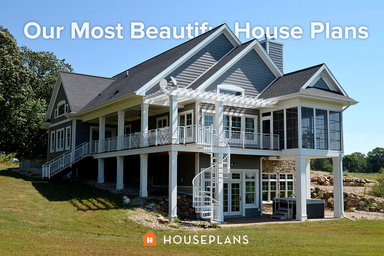The Shingle Style developed during the late 19th century in the northeastern United States where wood was plentiful and an Arts and Crafts/back-to-nature esthetic reigned. The great architectural historian Vincent Scully identified and codified the style and called it the first truly American building idiom. Cedar shingles became the enveloping matrix holding together an exuberant array of architectural expressions for a burgeoning leisure class. Consider houses like
Kragsyde, at Manchester by-the-Sea by Peabody & Stearns of 1882 with its leaping archway, numerous porches, bays, and turret or the Low house at Bristol, Rhode Island by McKim Mead &White of 1887,
treated as a single monumental gable hovering over its site like the wingspread of a giant bird (images courtesy Highstreethill.org).The esthetic quickly migrated to the west coast, where redwood was abundant, inexpensive, and very versatile both for structure and sheathing.
Now a wonderful new book from Rizzoli – Shingle Style: Living in San Francisco’s Brown Shingles, by architects Lucia Howard and David Weingarten, and beautifully shot by photographer David Duncan Livingston, opens the door to some of the Bay Area’s most distinctive shingle examples and shows how remarkable these houses remain (disclaimer – yours truly wrote the introduction).
It’s also fun to read, as the authors, who are hugely inventive designers themselves, vividly describe the roller coaster of the imagination that architects like Ernest Coxhead and Bernard Maybeck rode as they designed a wide array of quirky and compelling living environments. I say environments, because these are more than houses — they all engage with the outdoors — and show a free and flexible approach to nature and architectural history itself. As Lucia and David write: “Seemingly casual outside, richly realized within, they were, as Charles Keeler [author of The Simple Home, 1904] said, ‘temples of family life’ — welcoming, informal, yet with high purpose.”
Take the Waybur house on San Francisco’s Presidio Wall, by Ernest Coxhead, of 1901 (shown at the top of this post) a compelling combination of opposites: formal and informal, the ornamental and the plain. See how the ornament is concentrated around the pedimented doorway and the Palladian window above it. This latter feature has a novel base that follows the stair treads, which form their own balcony — Lucia and David call it an “architecturally uncanny railing.” I’d call it a guillotine window meeting the first four notes of Beethoven’s Fifth (you can see how carried away I get in exploring these marvelous houses…).
Inside, the stair is a splendid redwood riff on upward mobility. In the hands of such architects, shingles became the perfect foil for a lively imagination. (The previous color photographs are courtesy David Duncan Livingston.)
Later Bay Region architects like William Wurster and Joseph Esherick embraced the shingle, though in a more abstract manner. The approach remains popular today, as designs like Plan 461-32, by Brooks
Ballard, above, show. Moreover, the shingle lives on in more than wood, such as the all-weather, fire- and pest-resistant cementitious version from the James Hardie Company. Long live the shingle in all its forms and functions!
Kragsyde, at Manchester by-the-Sea by Peabody & Stearns of 1882 with its leaping archway, numerous porches, bays, and turret or the Low house at Bristol, Rhode Island by McKim Mead &White of 1887,
treated as a single monumental gable hovering over its site like the wingspread of a giant bird (images courtesy Highstreethill.org).The esthetic quickly migrated to the west coast, where redwood was abundant, inexpensive, and very versatile both for structure and sheathing.
Now a wonderful new book from Rizzoli – Shingle Style: Living in San Francisco’s Brown Shingles, by architects Lucia Howard and David Weingarten, and beautifully shot by photographer David Duncan Livingston, opens the door to some of the Bay Area’s most distinctive shingle examples and shows how remarkable these houses remain (disclaimer – yours truly wrote the introduction).
It’s also fun to read, as the authors, who are hugely inventive designers themselves, vividly describe the roller coaster of the imagination that architects like Ernest Coxhead and Bernard Maybeck rode as they designed a wide array of quirky and compelling living environments. I say environments, because these are more than houses — they all engage with the outdoors — and show a free and flexible approach to nature and architectural history itself. As Lucia and David write: “Seemingly casual outside, richly realized within, they were, as Charles Keeler [author of The Simple Home, 1904] said, ‘temples of family life’ — welcoming, informal, yet with high purpose.”
Take the Waybur house on San Francisco’s Presidio Wall, by Ernest Coxhead, of 1901 (shown at the top of this post) a compelling combination of opposites: formal and informal, the ornamental and the plain. See how the ornament is concentrated around the pedimented doorway and the Palladian window above it. This latter feature has a novel base that follows the stair treads, which form their own balcony — Lucia and David call it an “architecturally uncanny railing.” I’d call it a guillotine window meeting the first four notes of Beethoven’s Fifth (you can see how carried away I get in exploring these marvelous houses…).
Inside, the stair is a splendid redwood riff on upward mobility. In the hands of such architects, shingles became the perfect foil for a lively imagination. (The previous color photographs are courtesy David Duncan Livingston.)
Later Bay Region architects like William Wurster and Joseph Esherick embraced the shingle, though in a more abstract manner. The approach remains popular today, as designs like Plan 461-32, by Brooks
Ballard, above, show. Moreover, the shingle lives on in more than wood, such as the all-weather, fire- and pest-resistant cementitious version from the James Hardie Company. Long live the shingle in all its forms and functions!






